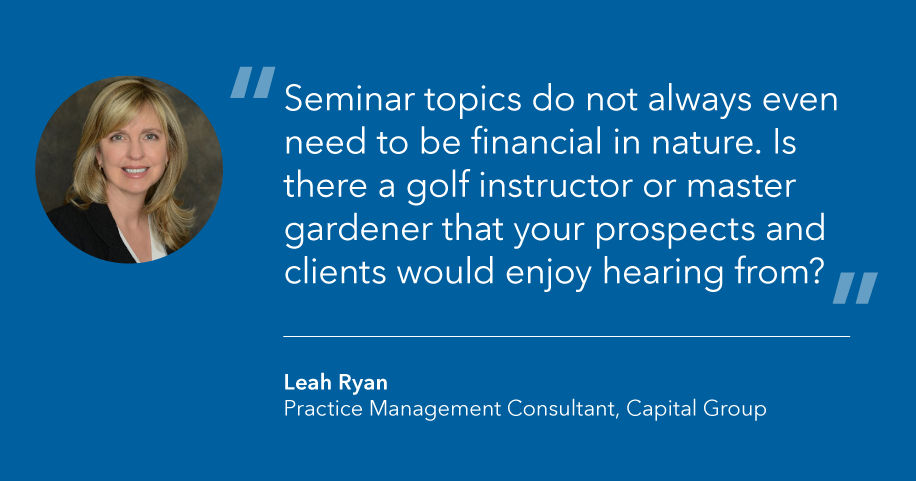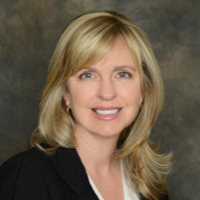2. Choose a compelling seminar topic
Whether the meeting is designed around finances or fun, make sure to take the opportunity to educate your audience on something important to them. If you can find something interesting or surprising, it may be easier to get their attention.
For example, advisors Joe Schoenhardt and Jim Hinchsliff in Chicago help clients before and during retirement, and they regularly conduct educational seminars about the bucket approach to retirement spending. Their strategy is to focus on a few key firms, and to understand the employee benefits inside and out so they are prepared to answer specific questions. Even those investors who don’t become clients enjoy learning about retirement buckets. And if they don’t become clients today, they may years or decades down the road.
For other education ideas, look at the demographics of your client base. Are they mostly retirees? Then perhaps they’d like to know more about long-term care or Medicare. If there are a lot of small-business owners, then maybe 401(k) plans and succession planning are relevant topics. If you’re in a rural area and have ranchers or farmers, perhaps they’d like to learn more about agricultural credit options. Think of these topics as a way to get potential clients to consider their broader estate plans.
Another way to find a compelling topic is to look to professional and social networks to see if there’s a great public speaker in your orbit, or a subject matter expert on some relevant topic. If so, you can rely on the speaker for the bulk of the presentation, and use the closing session to mention your services or other educational seminars you offer.
If your topic is broad and multifaceted, invite other professionals and create a panel discussion, while you take on the role of moderator. In the example of divorce, you could ask a divorce attorney to discuss points of law and a therapist to discuss the stress on family members. Other big-picture issues that may warrant other speakers could include estate planning, Medicare supplement coverage, succession planning, or college or elder care expenses.
There may even be pertinent twists you can add to better appeal to your niche. “For example,” says Ryan, “if you are in a geographical area where there are a lot of federal employees, be sure to address the Thrift Savings Plan, as well as the Federal Employees Retirement System, and even the Federal Employees’ Group Life Insurance Program. If you are familiar with this subject matter, it will help demonstrate to those prospects that you understand their systems,” she says.
You don’t necessarily have to confine yourself to financial topics. “Seminar topics do not always need to be financial in nature. Is there a golf instructor or master gardener that your prospects and clients would enjoy hearing from?” Ryan says. Ask your brand ambassadors — those clients you’d duplicate if you could — which topics they’d like to hear an expert talk about.



